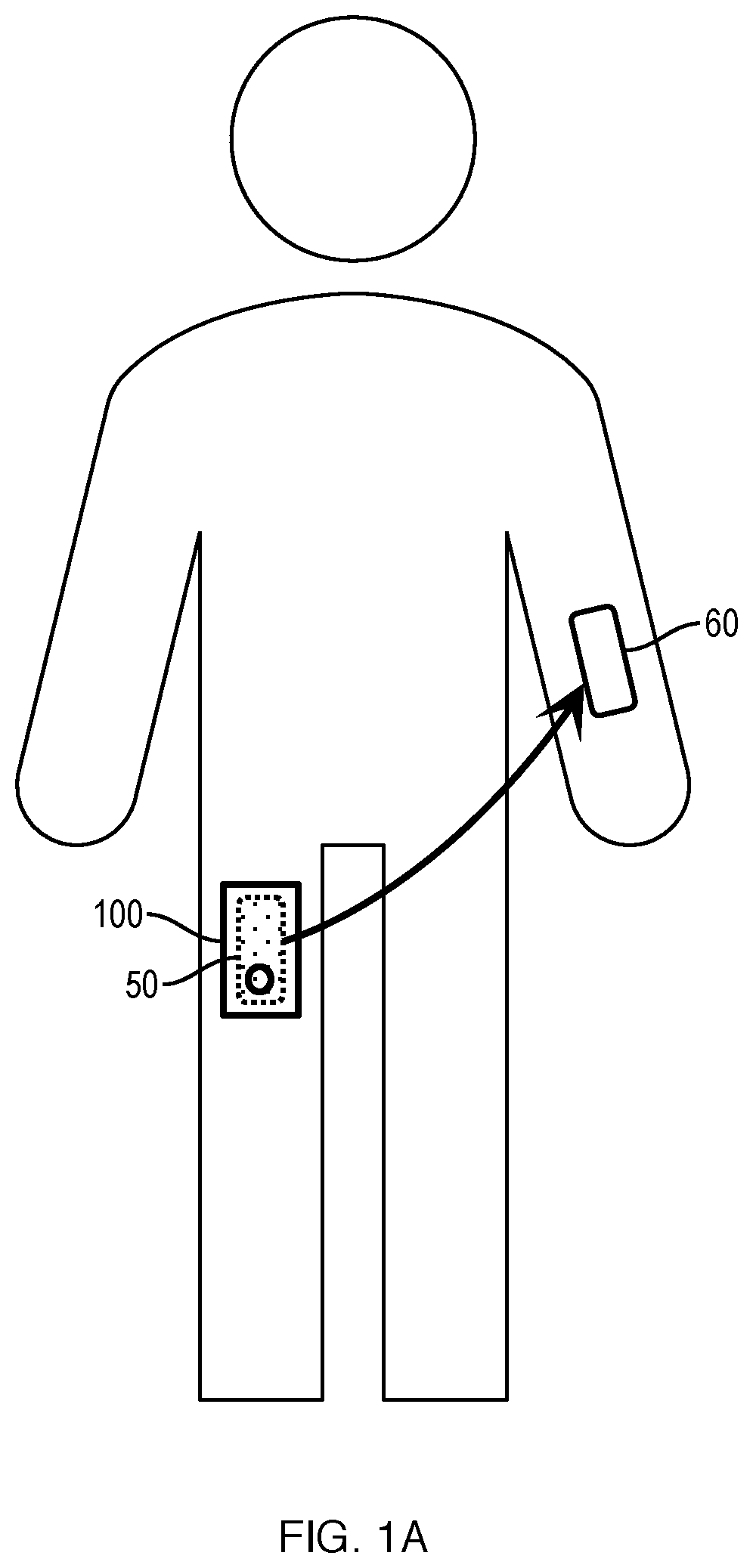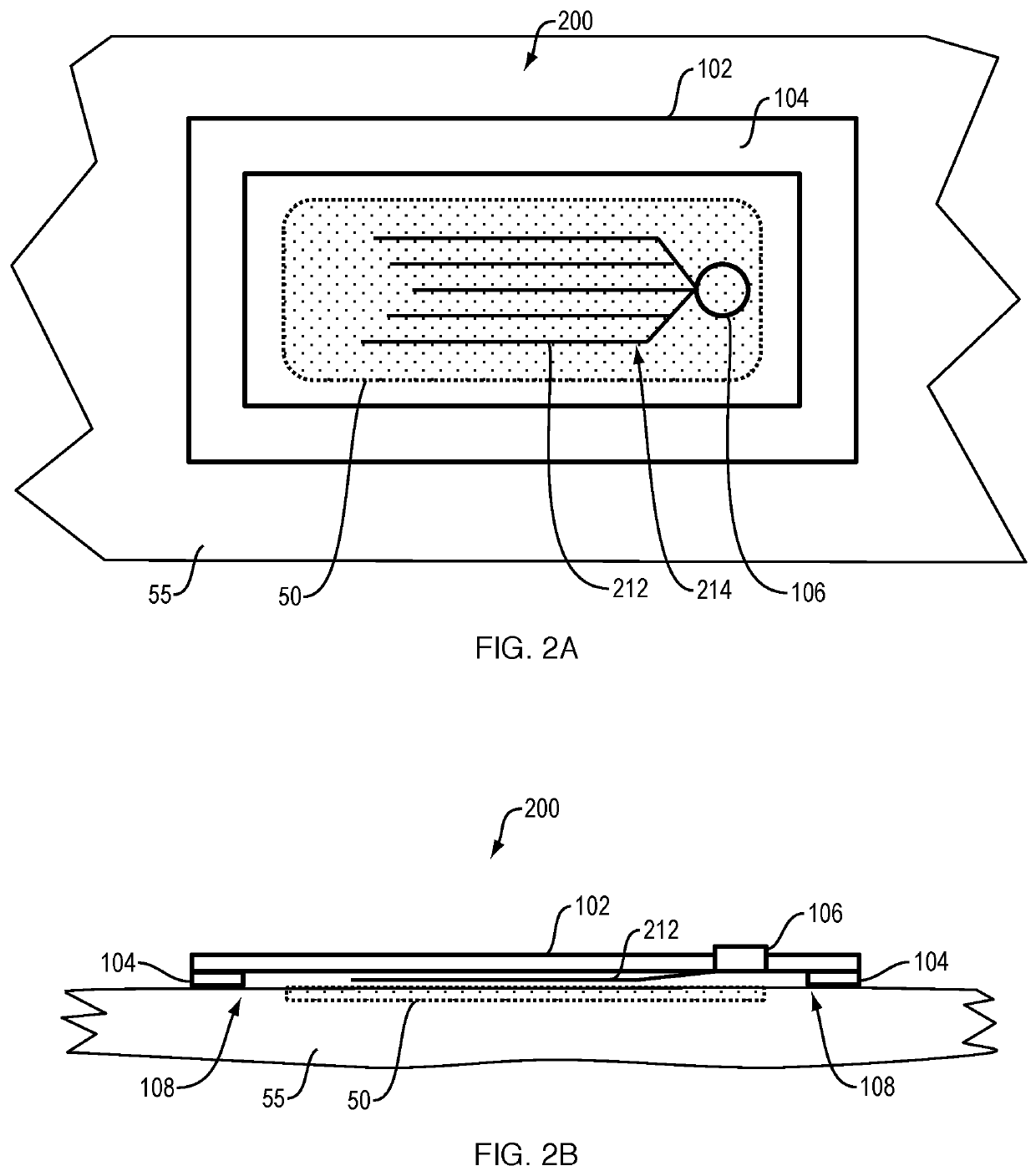Post-Operative Hybrid Dressing To Optimize Skin-Grafting Procedures In Reconstructive Surgery
a hybrid dressing and reconstructive surgery technology, applied in the field of post-operative hybrid dressing to optimize skin-grafting procedures in reconstructive surgery, to achieve the effects of reducing the need for dressing changes, reducing the leakage of excess fluid, and reducing pain
- Summary
- Abstract
- Description
- Claims
- Application Information
AI Technical Summary
Benefits of technology
Problems solved by technology
Method used
Image
Examples
embodiment 1
[0104]1. Embodiment 1 is a dressing for wound healing, comprising:[0105]a) a hydrogel sheet, the hydrogel sheet defining channels and an opening, wherein the channels are in fluid communication with the opening;[0106]b) a vacuum fitting in fluid communication with the opening, whereby the channels of the hydrogel sheet are in fluid communication with the vacuum fitting; and[0107]c) an adherent at the hydrogel sheet, whereby the hydrogel sheet can be affixed to skin surrounding a wound, thereby causing the channels to be in fluid communication with the wound. In a specific embodiment, the channels may be in contact with the wound.
[0108]2. The dressing of embodiment 1, further including a vacuum source in fluid communication with the vacuum fitting.
[0109]3. The dressing of embodiment 1, further including at least one growth factor in the hydrogel sheet.
[0110]4. The dressing of embodiment 1, further including at least one wound-healing component in the hydrogel sheet such as cells, fra...
embodiment 8
[0114]8. Embodiment 8 is the dressing of embodiment 1, further including at the hydrogel sheet at least one sensor.
[0115]9. The dressing of embodiment 8, wherein the at least one sensor is selected from the group consisting of a marker for apoptosis, and a marker for necrotic tissue.
[0116]10. The dressing of embodiment 1, wherein the hydrogel sheet includes dissolved oxygen.
[0117]11. The dressing of embodiment 1, wherein the hydrogel sheet includes at least one of stem cells and mesenchymal cells.
[0118]12. The dressing of embodiment 1, wherein the hydrogel sheet includes at least one of cultured fibroblasts and keratinocytes.
embodiment 13
[0119]13. Embodiment 13 is a method for treating a wound comprising the steps of:[0120]a) adhering a hydrogel sheet to a wound site, the hydrogel sheet defining channels and an opening, wherein the channels are in fluid communication with the opening; and[0121]b) applying intermittent vacuum through a fitting at the opening, whereby exudate is drawn from the wound, thereby treating the wound.
[0122]14. Embodiment 14 is the method of embodiment 13, wherein the wound is at least one member of the group consisting of: a skin graft recipient site; a skin graft donor site; a trauma site; a burn site; a surgical site; a fistula; an acute wound site; and a chronic wound site.
[0123]15. Embodiment 15 is the method of embodiment 14, wherein the wound is a fistula.
PUM
 Login to View More
Login to View More Abstract
Description
Claims
Application Information
 Login to View More
Login to View More - R&D
- Intellectual Property
- Life Sciences
- Materials
- Tech Scout
- Unparalleled Data Quality
- Higher Quality Content
- 60% Fewer Hallucinations
Browse by: Latest US Patents, China's latest patents, Technical Efficacy Thesaurus, Application Domain, Technology Topic, Popular Technical Reports.
© 2025 PatSnap. All rights reserved.Legal|Privacy policy|Modern Slavery Act Transparency Statement|Sitemap|About US| Contact US: help@patsnap.com



